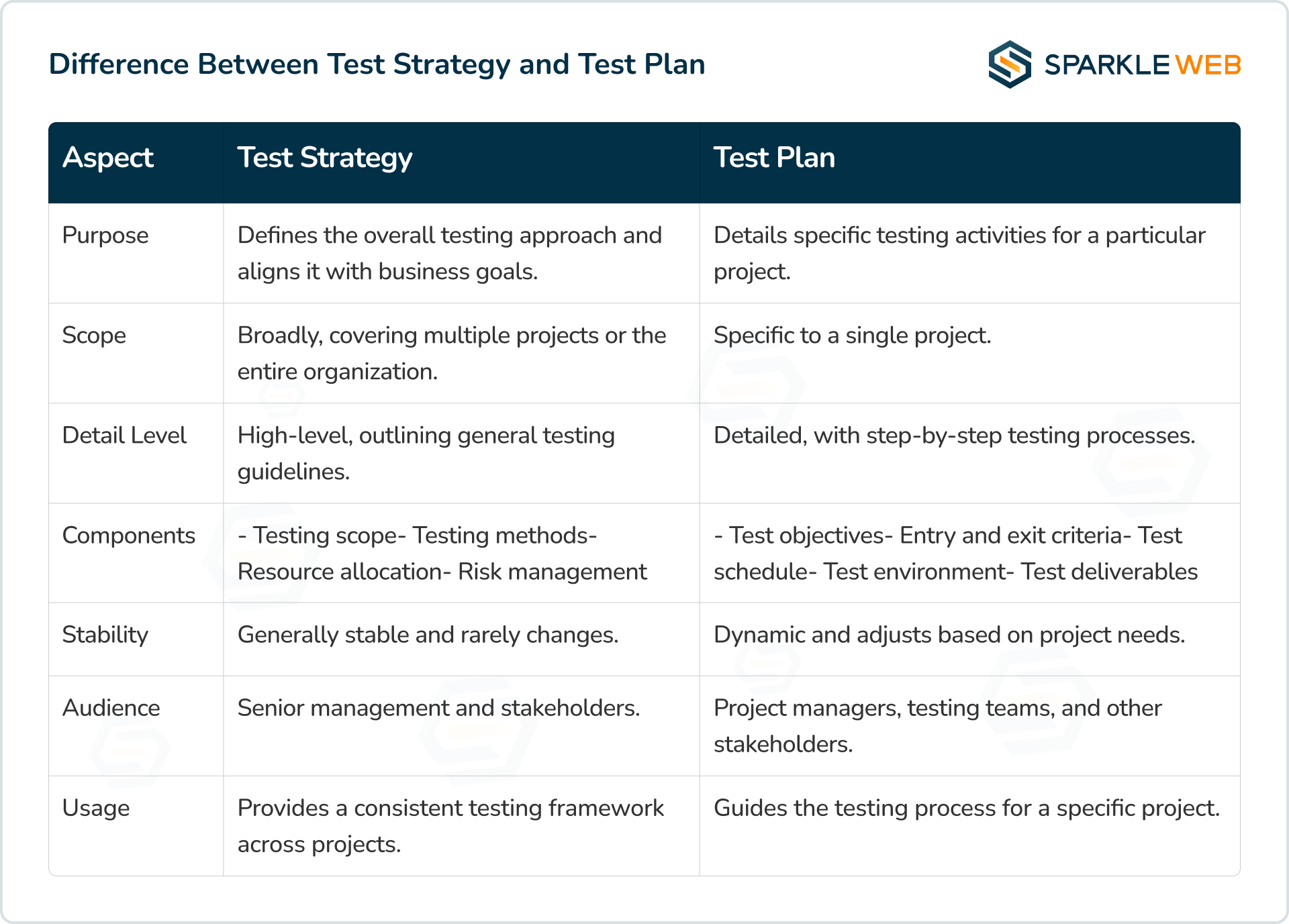What is a Test Plan?
Importance of a Test Plan
-
Direction and Focus: Provides a clear roadmap on what to test, how to test, and who is responsible.
-
Resource Management: Outlines required resources, including team members, tools, and environments, for efficient allocation.
- Risk Mitigation: Identifies potential risks and outlines mitigation strategies to prevent project delays.
- Quality Assurance: Ensures thorough testing of all software aspects, improving the final product’s quality.
-
Communication: Serves as a communication tool among stakeholders, ensuring alignment on objectives and methodologies.
Difference Between Test Strategy and Test Plan

Key Components of a Test Plan
Types of Test Plans
-
Master Test Plan: Covers all testing activities within a project.
-
Phase Test Plan: Focuses on specific testing phases like system or integration testing.
- Unit Test Plan: Details unit testing activities, typically performed by developers.
- System Test Plan: Ensures the entire integrated system meets requirements.
-
Operational Acceptance Test Plan: Validates operational readiness, including maintenance and disaster recovery.
How to Create an Effective Test Plan
Best Practices for Creating an Effective Test Plan
-
Understand the Scope: Clearly define what will and won’t be tested.
-
Involve Stakeholders: Engage developers, project managers, clients, and end-users early.
- Specify Clear Objectives: Define measurable goals for testing.
- Prioritize Features: Focus on high-impact, high-risk areas.
-
Detail the Test Environment: Ensure accurate replication of production settings.
-
Identify Test Criteria: Set clear entry and exit criteria.
-
Plan Resources Efficiently: Ensure required personnel, tools, and infrastructure are available.
-
Manage Risks Proactively: Identify and mitigate risks early.
-
Maintain Flexibility: Adapt the plan as necessary based on project changes.
- Review and Revise Regularly: Keep the plan updated as the project evolves.
Why Choose Sparkle Web for Your Test Plan Needs?
-
Expertise and Personalization: Our experienced team crafts customized test plans tailored to each project, ensuring relevance across industries.
-
Advanced Tools and Comprehensive Coverage: We use cutting-edge tools for functional, performance, security, and usability testing.
- Risk Management and Transparent Communication: We proactively identify risks, adhere to strict timelines, and keep clients informed with regular updates.



Keyur Kinkhabwala
QA Manager
Reply